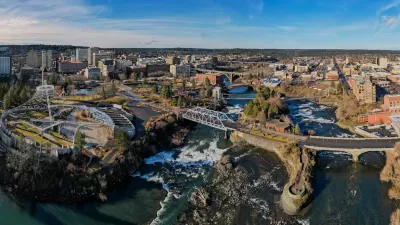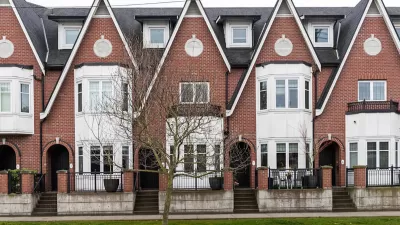Earlier this month, the Hartford Planning and Zoning Commission voted unanimously on a revised zoning code that lets builders forgo parking citywide.

In what many urbanists will consider a victory, the city of Hartford, Connecticut has abandoned parking minimums on new construction. This follows a similar decision by Buffalo, New York in January 2017.
Angie Schmitt writes, "The Hartford legislation goes farther than Buffalo's in some ways, with fewer loopholes. (In Buffalo, the City Council can still decide to require parking through a review process for projects larger than 5,000 square feet.) But because parking mandates for car dealerships are Connecticut state law, those minimums remain in the Hartford code. Other special uses, like stadiums, will be subject to case-by-case review."
According to Sara Bronin, who chairs Hartford's Planning and Zoning Commission, eliminating parking mandates downtown has made it easier for developers to rehabilitate buildings there. That decision came two years before the citywide rule change.
"The reforms are expected to reduce housing costs, cut traffic, and reduce harmful runoff. About 42 percent of Hartford is impermeable surfaces, says Bronin, which contributes to water pollution and the urban heat island effect."
FULL STORY: Hartford Eliminates Parking Minimums Citywide

Manufactured Crisis: Losing the Nation’s Largest Source of Unsubsidized Affordable Housing
Manufactured housing communities have long been an affordable housing option for millions of people living in the U.S., but that affordability is disappearing rapidly. How did we get here?

Americans May Be Stuck — But Why?
Americans are moving a lot less than they once did, and that is a problem. While Yoni Applebaum, in his highly-publicized article Stuck, gets the reasons badly wrong, it's still important to ask: why are we moving so much less than before?

Using Old Oil and Gas Wells for Green Energy Storage
Penn State researchers have found that repurposing abandoned oil and gas wells for geothermal-assisted compressed-air energy storage can boost efficiency, reduce environmental risks, and support clean energy and job transitions.

Greening Oakland’s School Grounds
With help from community partners like the Trust for Public Land, Oakland Unified School District is turning barren, asphalt-covered schoolyards into vibrant, green spaces that support outdoor learning, play, and student well-being.

California Governor Suspends CEQA Reviews for Utilities in Fire Areas
Utility restoration efforts in areas affected by the January wildfires in Los Angeles will be exempt from environmental regulations to speed up the rebuilding of essential infrastructure.

Native American Communities Prepare to Lead on Environmental Stewardship
In the face of federal threats to public lands and conservation efforts, indigenous groups continue to model nature-centered conservation efforts.
Urban Design for Planners 1: Software Tools
This six-course series explores essential urban design concepts using open source software and equips planners with the tools they need to participate fully in the urban design process.
Planning for Universal Design
Learn the tools for implementing Universal Design in planning regulations.
Heyer Gruel & Associates PA
City of Moreno Valley
Institute for Housing and Urban Development Studies (IHS)
City of Grandview
Harvard GSD Executive Education
Salt Lake City
NYU Wagner Graduate School of Public Service
City of Cambridge, Maryland





























